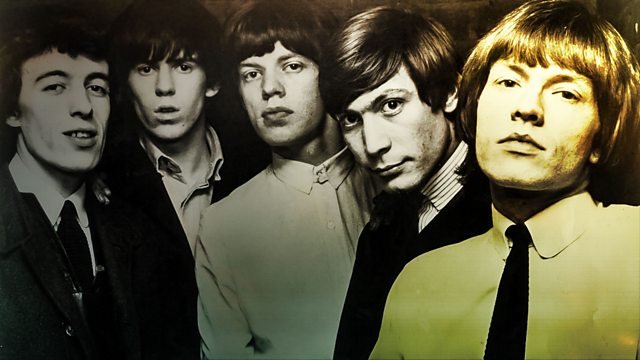In the early 1960s, fate wove the destinies of Mick Jagger and Keith Richards together on the bustling platform two of Dartford Railway Station. A mere 18 and 17 years old, respectively, the duo discovered a shared passion for American blues music, setting the stage for the formation of The Rolling Stones. Their musical alliance expanded with the addition of like-minded multi-instrumentalist Brian Jones, alongside Charlie Watts and Bill Wyman.
Initially following Brian Jones’ lead, The Rolling Stones embarked on their musical journey, but it was the evolving songwriting prowess of Mick Jagger and Keith Richards that steered the band towards the contemporary pop-rock scene. The watershed year of 1965 marked the zenith of the Jagger-Richards partnership with three consecutive UK number ones: ‘The Last Time,’ ‘(I Can’t Get No) Satisfaction,’ and ‘Get Off Of My Cloud.’
Having secured another chart-topper with ‘Paint It, Black’ in May 1966, The Rolling Stones embraced the burgeoning psychedelic era, drawing inspiration from The Beach Boys’ ‘Pet Sounds’ and The Beatles’ ‘Revolver.’ Brian Jones, who had already incorporated the sitar in ‘Paint It, Black,’ continued his musical exploration, abandoning his guitar to experiment with the organ, recorder, marimba, dulcimer, vibraphone, and kazoo on the 1966 album ‘Between the Buttons.’
In a candid interview with Rolling Stone, Mick Jagger reflected on ‘Between the Buttons,’ acknowledging its merit but lamenting the technical compromises: “Frank Zappa used to say he really liked it. It’s a good record, but it was, unfortunately, rather spoiled. We recorded it in London on four-track machines. We bounced it back to do overdubs so many times we lost the sound of a lot of it.”
Despite Jagger’s reservations about the album, he singled out ‘Ruby Tuesday,’ featured on the US release, as a standout track: “That’s a wonderful song. It’s just a nice melody, really. And a lovely lyric. Neither of which I wrote, but I always enjoy singing it.”
The primary architect of ‘Ruby Tuesday’ was Keith Richards, with some creative input from Brian Jones. The name itself appears symbolic, possibly representing a metaphorical persona rather than a tangible individual. However, Richards hinted in According to the Rolling Stones that the inspiration behind the song might have been Linda Keith, his girlfriend at the time. Richards shared, “It was probably written about Linda Keith not being there. I don’t know, she had pissed off somewhere. It was very mournful, very, very Ruby Tuesday, and it was a Tuesday.”
Richards further elaborated on the emotional genesis of the song, describing it as a reflection on a breakup: “That’s one of those things – some chick you’ve broken up with. And all you’ve got left is the piano and the guitar and a pair of panties. And it’s goodbye, you know. And so it just comes out of that. And after that, you just build on it. It’s one of those songs that are easiest to write because you’re really right there, and you really sort of mean it. And for a songwriter, hey, break his heart, and he’ll come up with a good song.”
As for the live rendition of ‘Ruby Tuesday,’ it holds the 28th spot in The Rolling Stones’ setlist rankings, with the band having performed it live on 180 occasions. In contrast, their most frequently played song remains ‘Jumpin’ Jack Flash’ with an impressive 1,196 live performances.
To immerse yourself in the timeless allure of The Rolling Stones’ ‘Ruby Tuesday,’ take a moment to listen to it below.
